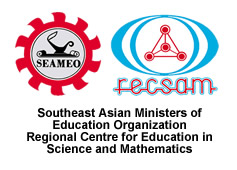Learning Science and Mathematics (LSM) Journal Vol.1, Issue 15, pp 71-83
Web 2.0 in Secondary Science Instruction: Assessing Teachers’ Selfefficacy and Integration Level and the Relationship between Them
Ling Mee Choo, Tuan Mastura Tuan Soh & Ahmad Zamri Mansor
Received first draft 15 May 2020. Received reports from first reviewer (6 July); second reviewer (21 July). Received revised draft 22 October.
Accepted: 6 November 2020.
Published: 30 December 2020
Abstract
Affordances of Web 2.0 applications in line with 21st century skills demonstrate the potential of Web 2.0 as a relevant learning platform. This study aims to examine the levels of teachers’ self-efficacy and integration of Web 2.0 in secondary science instruction. The objectives of the study are to: (1) Identify the level of teachers’ selfefficacy, (2) Examine Web 2.0 integration level in secondary science instruction; and (3) Study the relationship between teachers’ self-efficacy and Web 2.0 integration in science teaching. This study is based on a quantitative method by using a set of questionnaires. Research sample consisted of 108 secondary school science teachers from nine schools in Miri, Sarawak who were selected using cluster random sampling technique. Data were analysed using descriptive statistics and Pearson correlation. Findings revealed that teachers’ self-efficacy level was moderate (M = 3.23, SD = 0.60) while the integration level of Web 2.0 tools in secondary school science instruction was low (M = 2.30, SD = 0.71). Furthermore, this study found a strong significant positive correlation, r (106) = 0.62, p
Keywords: Web 2.0; Integration; Science education; Secondary school; Teachers’ self-efficacy
© 2020 SEAMEO RECSAM LSM Journal
More Article
...

